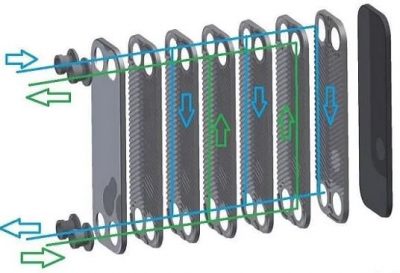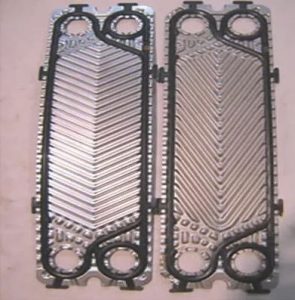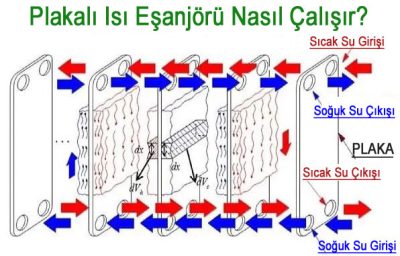What is Plate Heat Exchanger?; The laws of physics say that the energy of a system continues to flow until it is balanced. According to the law of thermodynamics, heat flows from one system to another due to heat or temperature differences between both systems. Exchangers work according to the balance principle. Heat exchangers play the most important role in heat transfer from one fluid to another. There are different types of heat exchangers and plate heat exchanger (PHE) is one of them. The plate heat exchanger separates the cold and hot liquid by withdrawing heat from the surface. This article basically explains various aspects of plate heat exchanger.
What is Plate Heat Exchanger?

Now let’s come to the answer to the question “What is Plate Heat Exchanger?” In the 1920s, Dr. The plate heat exchanger (PHE), first invented by Richard Seligman, moves heat from one liquid to another using a series of metal plates. These plates are placed on top of each other and allow the liquid to move between them through the channels created. Plate Heat Exchanger is a circuit element that enables heat transfer between two fluids, liquid or gas, with a temperature difference between them, through plates, without any physical contact.
The most important advantage of plate heat exchangers over other heat exchangers is that they increase the heat transfer rate and significantly accelerate the temperature change rate as the fluid spreads over the plate by being exposed to a larger surface area.
Nowadays, plate heat exchangers are very widely used and millions of boilers are used in the hot water section in very small welded designs. High heat transfer efficiency in such a small size increases domestic hot water (DHW) flow in a boiler.
Small plate heat exchangers have a big impact on home heating and hot water. Larger business models use gaskets between the plates, while smaller models tend to use welding.
Working System of Plate Heat Exchanger
 A plate heat exchanger is a type of heat exchanger that contains a series of metal plates to transfer heat between fluids. The plate heat exchanger works according to the thermodynamic principle. In these exchangers, each plate has a closed, hollow tubular shell.
A plate heat exchanger is a type of heat exchanger that contains a series of metal plates to transfer heat between fluids. The plate heat exchanger works according to the thermodynamic principle. In these exchangers, each plate has a closed, hollow tubular shell.
The plates are arranged in such a way that thin rectangular channels are developed to exchange heat between the halves. The operating fluid moves between these twisted and narrow channels.
The plates of this exchanger are surrounded by gaskets to control fluid flow. These seals are arranged so that only one type of liquid (such as oil being heated) is distributed on one plate and another liquid (such as hot water) is distributed on the next plate. The figure below represents two adjacent panels.
After this arrangement, cold and hot fluids alternately pass through the plate, thus a heat exchange occurs. The plates have a large surface area; Therefore, they offer a more excellent heat transfer rate than tube heat exchangers.
What is Plate Heat Exchanger and How Does It Work?

As you can see in the adjacent diagram, the coolant inlet (blue) is shown at the bottom, the coolant outlet is shown at the top, and vice versa, the hot fluid outlet (red). The cold liquid flows upwards and the liquid to be cooled flows downwards, transferring heat through the plates. After completion of this process, the heating medium is finally cooled and the cooling medium is heated.
The heat transfer principle and design of plate heat exchangers are characterized by their compact design, low heat losses, wide range of applications, flexible operation, high heat transfer efficiency, small installation space and convenient installation and cleaning functions.
In this article, we tried to answer the question “What is Plate Heat Exchanger?” You can reach us through our contact information for any questions you may have.
 Stainless Steel Products
Stainless Steel Products Mixing
Mixing Pumps
Pumps Heat Exchangers
Heat Exchangers System Solutions
System Solutions